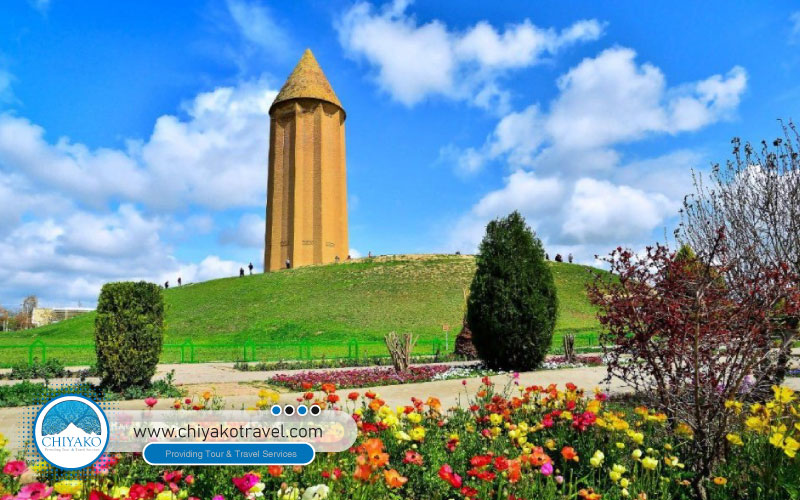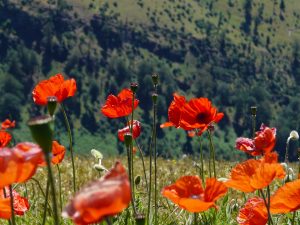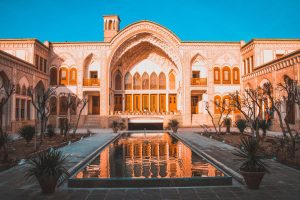Why Gonbad-e Qabus Tower?
- Gonbad-e Qabus is one of the architectural structures of Iran that has a global reputation and is known as the best heritage in the history of human engineering.
- The reason for building this spectacular tower is still unknown and there are only unanswered questions about it.
- This monument is included in the UNESCO World Heritage List as the 15th historical monument of Iran.
- Gonbad-e Qabus Tower is the tallest brick tower in the world.
About Gonbad-e Qabus
Gonbad-e Qabus Tower is a historical monument dating back to the 4th century AH in the city of Gonbad-e Qabus, north of Iran in Golestan province. Its architectural style is a mystery. This building is the tallest brick tower in the world, located above ground slopes that are fifteen meters taller than Earth. The height is 72 meters in length. It built in the year 375 AH and during the reign of Qabus (Kavos) bin Vashmgir and in the city of Gonbad-e Qabus, the capital of the kings of Al-Ziar.

Gonbad-e Qabus in literature
Arthur Upham Pope has written about this:
The east of Alborz Mountains, and against the vast deserts of Asia, Gonbad-e Qabus is one of the greatest architectural masterpieces of Iran with its magnificence and magnitude. This building called Gonbad-e Qabus, the tomb of Qabus(Kavos).
Oleg Grabar (1975) wrote about this tower:
“clearly belongs to the general category of a secular architecture for conspicuous consumption”. While discussing the forms of tower tombs of northern Iran (which includes the Gonbad-e Qabus tower), Grabar stated that they may be connected with Zoroastrian funerary structures. According to him, the link to Zoroastrian funerary structures is “strongly suggested”.
He cites as examples the use of Persian solar calendar in the inscription on Gonbad-e Qabus, as well as the occasional use of Middle Persian (Pahlavi) on the other tomb towers of northern Iran. Melanie Michailidis (2009), Zoroastrian influence is “manifestly present” in the tower tombs of northern Iran, and can be seen in their height, purpose and forms. She argues that the towers were built by the Ziyarids and Bavandids to emulate “the lost princely mausolea of the Sasanians”
Architecture of Gonbad-e Qabus
To discover the way and destination in dark nights or foggy nights. Of course, there are other functions quoted for Gonbad-e Qabus. For propagation to distant areas, using the light rays used the fire in the towers. In Sassanid rule, these Gonbad-e Qabus were considered a fire place and the responsibility of keeping fire was on the hands of the priests. These towers have also astronomical applications due to their height and geometry. The construction of these guiding towers, which in the long run were also called lanterns, was customary from pre-Islamic times, but in the fourth to sixth centuries AD, the construction of these buildings was very thriving.
Gonbad-e Qabus is a prominent example of Islamic architecture that has been built using two architectural methods:
1- Razi architectural style which is related to the fifth century to the beginning of the seventh century and was very popular during the Samanids, Seljuks and Khwarezmshahis. Among the features of this architectural style are the use of quality materials in the building, the use of a four-porch design, the use of glazed and bricks, the use of brick drawings with broken and straight lines, the decoration of the building with plastering and. … Cited.
2- Khorasani style which was used from the first to the fourth century AH and among its features is the construction of mosques in the form of naves and forty columns and oval or oval arches.
Richard Ettinghausen, a German-American historian of Islamic art, and Oleg Grabar, an art historian and archaeologist, believed that the building was built by a new Muslim Zoroastrian, and therefore signs of one of the pre-Islamic architectural traditions can be seen in it. They believe that the origin of the construction of the tower should be traced to some monuments and the transformation of tents and tents into an architectural monument.
The use of innovation in the building has caused Gonbad-e Qabus to have a significant impact on the architecture of religious buildings in Iran, Anatolia and Central Asia. The general form is cylindrical, which gradually narrows from 17 meters to 15.5 meters and finally reaches a beautiful dome. A special feature that distinguishes this tower from other examples is a plan in the shape of a 10-pointed star that indicates the development of mathematics and science in the Islamic world and depicts the intelligence of architects in the first millennium AD. This building with a height of about 55 meters (in some sources 72 meters), is located on a hill 15 meters high and has the following dimensions:
Outdoor environment: 60,288 meters
Indoor environment: 30,144 meters
Wall thickness: 4.8 meters
Inner diameter: 9.6 meters
One of the interesting points in the construction of this building is that due to the lack of advanced facilities and technology, instead of using scaffolding to access the top of the building, the soil has been compacted in a spiral and steps around the facade. After finishing the work, they spread the soil around the tower.
Read more: we are one of the best Iran tour and Iran visa operators in the world!

The goal of building Gonbad-e Qabus
Abu al-Ma’ali tomb:
The most likely motive for the construction of such a building could have been tomb of Qabus which was never found during numerous excavations of Qabus’s body. There are some ideas that Qabus body was hanging in a coffin from the ceiling of the tower. The eastern porch of tower was due to the body of Qabus is able to receive the first rays of sunlight.
The symbol of the monarchy’s glory:
All the kings always want to leave their names for many years in the minds of the people. Kings always want immortality. So we could say that the purpose of this magnificent building is to show the glory of the kingdom.
Observatory:
Some Iranian historians believe that Gonbad-e Qabus was built as an observatory. In the book “The Culture of Persian Dari Literature”, it has been written about “Kushyar Gilani” which has built an observatory known for its name, but its location has not been determined. Thus, some have suggested that the Tower of Qabus is the same as Observer who is the commandment of Qabus based on the plan of the Gilani.
In the year 1931, Gonbad-e Qabus became a national monument of Iran and became one of the UNESCO World heritage site in summer 2012.











